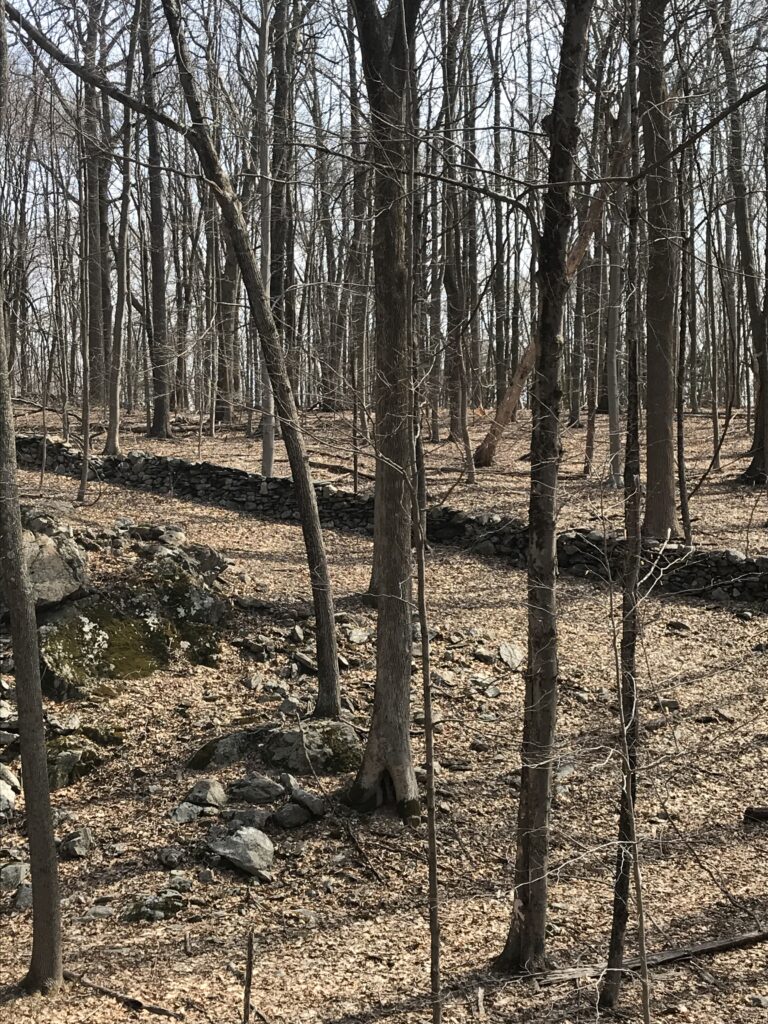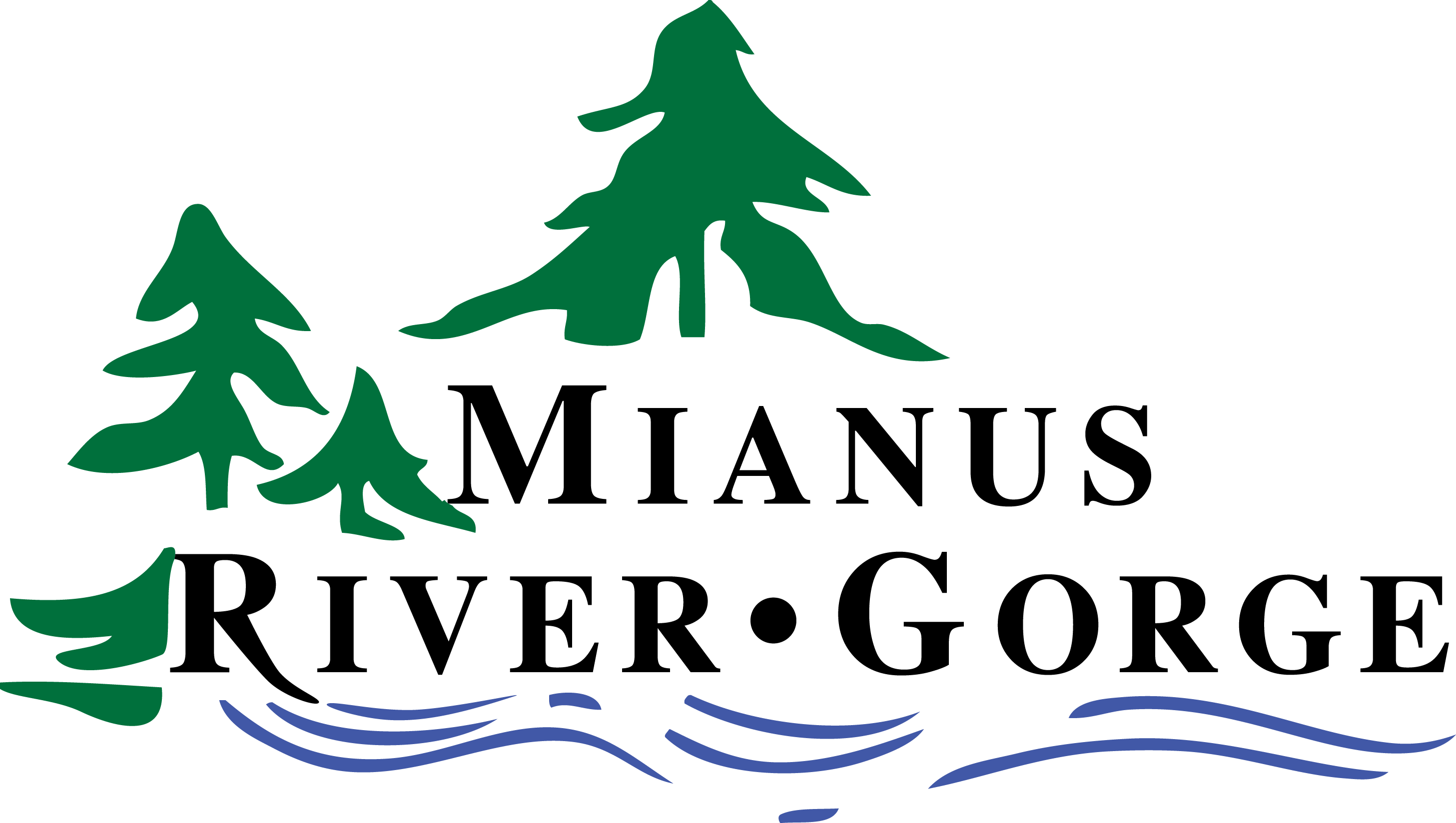The final component of the Save the Hemlocks initiative is to improve the health and buffering ability of the younger forest that surrounds the Mianus River Gorge old-growth forest. Mianus River Gorge Preserve (MRGP) is a linear preserve and past agricultural activities came very close to the core old-growth forest. As pasturelands and farm fields were abandoned, they reverted to forest, but their development was influenced by a growing deer population and changes in the soils associated with past activities. If we are to keep our old-growth forest healthy, we need these second-growth forests to further buffer the fragile core from human activities.

Dating back to Colonial times, over 50 old paddocks delineated by stone walls border the old-growth forest in the Mianus River Gorge Preserve. Today, these former paddocks contain the younger trees that have grown from the soil that once supported the agricultural past of this region. A typical sample of species that first colonizes old fields in this area might be black and yellow birch, white pine, red maple, American beech, aspen, and a variety of native shrubs. As the forest matures, more “climax” species seed in such as oak, hickory, black cherry, eastern hemlock, tulip poplar, and sugar maple. These longer-lived species constitute the bulk of the biomass of the old-growth forest found at MRGP.
Most of the fields at MRGP were reverting to forest at the same time as the deer population was growing exponentially. The heavy browsing by white-tailed deer combined with the disturbed soils in these abandon agricultural fields led to the newer forests being dominated by only a few species. The present canopy of 60 year-old trees appears to be dominated by black birch, red maple, and black locust with only the occasional climax species. It appears that as many of these short-lived species reach the end of their lives, there are not sufficient climax species to take over. As these species fall down, they open the canopy. With a large deer population and without longer-lived climax species to fill the gaps, these openings are being invaded by non-native species which are better suited to survival (deer do not like to eat non-native species and, at the same time, non-native species like the disturbed soils of the old farm fields). Managers believe that over time this will create a forest that is a very poor buffer for the core old-growth forest, one that is heavily laden with non-native species and lacks native diversity.
Another vital yet unseen key to preserving biodiversity is considering the mycorrhizal fungi that lives in the soil. Mycorrhizal fungi form a symbiotic relationship with the root system of the trees and plants, sharing important nutrients. We believe that these fungi may play a vital role in the growth of a number of tree species that are key to revegetating of our old farm fields.
MRG will conduct a survey of these paddock areas to ascertain the diversity existing in the second-growth forest to determine if there is sufficient stocking rate of climax species to take over the canopy when early successional species die. Using the stone walls of the paddocks as a natural grid system, MRG will look for the climax species in each section as well as openings in the canopy, invasive species infestations, and evidence of deer over-browsing. Data will be used to develop a management strategy for these areas including: adjustments to MRG’s on-going deer management program, possible selective cutting to release key climax species, planting more long-lived species and native shrubs in forest openings, and working with mycorrhizal fungal experts to inoculate forest soils to improve growing conditions for more desirable climax species. Working with experts from SUNY ESF and other facilities, MRG will try to develop a soil inoculant that is rich in mycorrhizal fungi and can be sprayed on areas or plantings to improve development and growth of important climax old-growth species.
Mianus River Gorge has the ideal conditions for this project in that it has a plethora of old farm fields juxtaposed to the old-growth forest and these fields are well delineated by stone walls. We also have the history associated with these fields including when they reverted back to forest. It is possible to use this historical data to compare among paddocks to determine how historical use and timing of abandonment might have influenced forest development. We are also located in an area where other protected lands were almost all once old farm fields and any information learned from MRG management activities can be shared with other land managers to benefit their forests. Westchester County is at the southern-most edge of the normal range for many climax species such as sugar maple and at the northern-most edge of some southern species such as some species of oak and tulip poplar. The impact of a warming climate will undoubtedly affect these trees in the future, but by understanding how best to culture these species may make the difference in being able to buffer the MRG forest from future climate change. Together with ongoing invasive species removal and deer management, MRG’s efforts to improve the health and buffering ability of the younger forest may make the difference as to whether this historical old-growth forest survives for future generations to enjoy.
